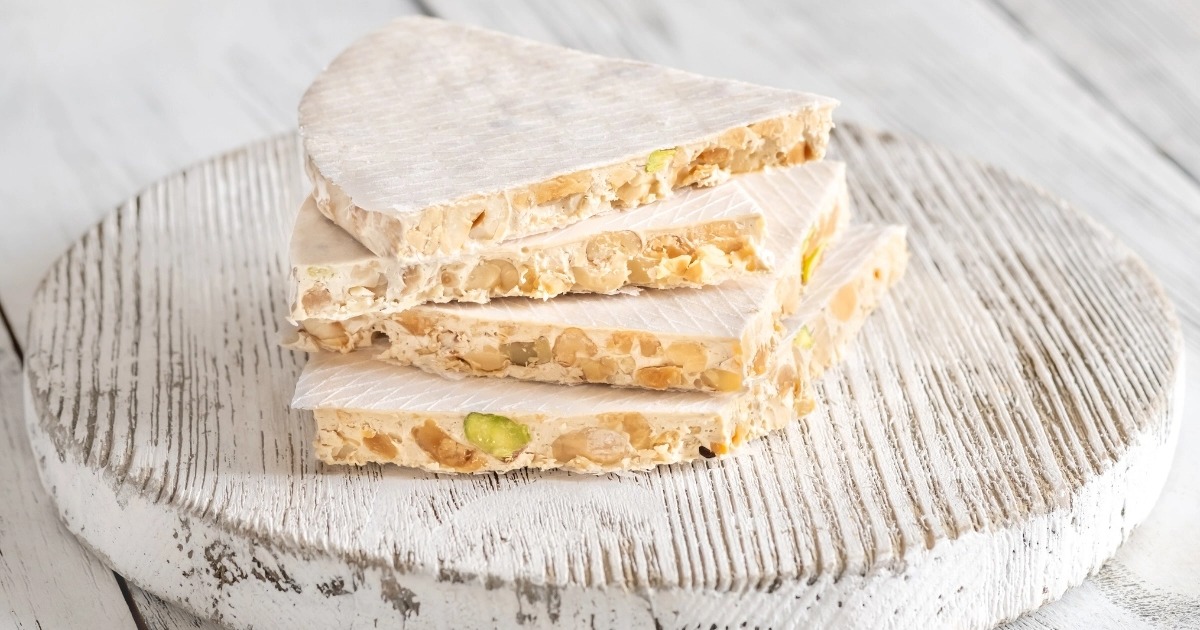The Fascinating Origins Of Spanish Turrón

Have you ever wondered about the origins of Spanish turrón? This delicious treat, often enjoyed during Christmas, has a rich history that dates back centuries. Turrón, a type of nougat, combines honey, sugar, egg whites, and almonds to create a sweet, crunchy delight. Its roots can be traced to the Moors who brought the recipe to Spain during their rule. Over time, the Spanish perfected the recipe, making it a beloved holiday tradition. Today, you can find various types of turrón, from the classic hard version to the softer, chewy kind. Each bite offers a taste of history and culture.
The Birth of Turrón
Turrón, a beloved Spanish treat, has a rich history that dates back centuries. This nougat-like confection, made from almonds and honey, has become a staple during Christmas. But where did it all begin?
Ancient Origins
Turrón's roots can be traced to ancient civilizations. The Greeks and Romans enjoyed similar sweets made from nuts and honey. These early versions laid the groundwork for what would become turrón.Arab Influence
The Moors, who occupied Spain for centuries, introduced many culinary traditions. They brought almonds and honey, key ingredients in turrón. This blend of cultures created the foundation for the modern treat.
Evolution Through the Ages
As time passed, turrón evolved, incorporating new ingredients and techniques. Each region of Spain added its unique twist, resulting in a variety of flavors and textures.
Medieval Spain
During the Middle Ages, turrón became popular among the nobility. Recipes began to include sugar, making the treat even sweeter. This period saw the rise of different turrón varieties.Renaissance Innovations
The Renaissance brought new culinary techniques to Spain. Chefs experimented with different nuts, spices, and even chocolate. These innovations expanded the range of turrón flavors available.
Regional Varieties
Spain's diverse regions each have their own take on turrón. From the soft, chewy versions to the hard, crunchy ones, there's a turrón for every taste.
Jijona
Jijona, a town in Alicante, is famous for its soft turrón. Made with ground almonds and honey, it has a smooth, creamy texture. This variety is often referred to as "turrón blando."Alicante
In contrast, Alicante produces a hard turrón known as "turrón duro." Whole almonds are mixed with honey and sugar, creating a crunchy, brittle texture. This version is perfect for those who enjoy a bit of a bite.Granada
Granada offers a unique twist with its "turrón de nieve." This white turrón is made with egg whites, giving it a light, airy texture. It's a refreshing change from the denser varieties.
Modern-Day Turrón
Today, turrón continues to be a beloved treat, especially during the holiday season. Modern chefs experiment with new flavors and ingredients, keeping the tradition alive while adding contemporary twists.
Gourmet Turrón
Gourmet versions of turrón have emerged, featuring exotic ingredients like pistachios, dried fruits, and even edible gold. These luxurious treats cater to those looking for something special.Vegan and Gluten-Free Options
With dietary preferences evolving, vegan and gluten-free turrón options have become available. These versions use alternative sweeteners and nuts, ensuring everyone can enjoy this classic treat.International Influence
Turrón has crossed borders, becoming popular in countries around the world. Each culture adds its own spin, resulting in a global array of turrón varieties.
Turrón's Sweet Legacy
Spanish turrón has a rich history that spans centuries. Originating from the Moors, this delicious treat has become a staple in Spanish culture, especially during Christmas. Its blend of honey, sugar, and almonds creates a unique flavor that has stood the test of time.
Whether you prefer the hard, crunchy turrón de Alicante or the soft, chewy turrón de Jijona, there's a version for everyone. This traditional dessert not only satisfies your sweet tooth but also connects you to a piece of Spain's past.
Next time you enjoy a piece of turrón, remember its journey from ancient times to your table. It's more than just a sweet treat; it's a slice of history. So, share it with friends and family, and keep the tradition alive.

